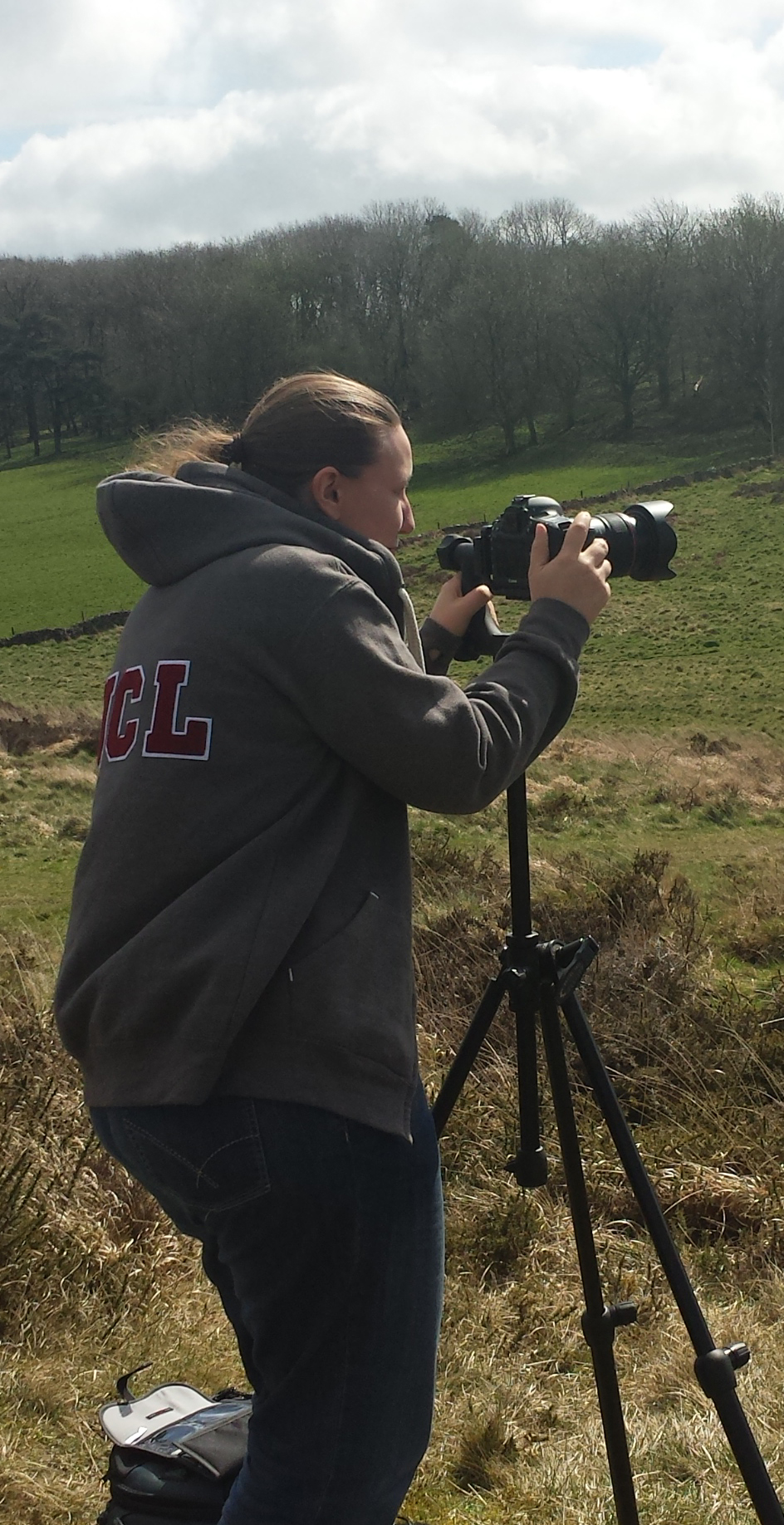
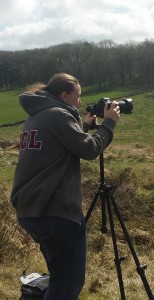 No, not a post about a popular beat combo from the 1980s, nor an attack of Wandering Apostrophe Syndrome (or Pedant Disease as it’s also known); this post is about my adventures in documentary making as an unforeseen but enjoyable effect of taking ACRL3001: Archaeometallurgy as one of my Year 2 modules. Who could resist the chance to ‘make history’, as the course handbook states, by being the first group at UCL to have a video submission option as coursework. I thought this sounded like immense fun, having had my fill of the more typical 2500 word essays this term. At times I seriously wished I’d picked the alternative option to the video, which was a poster submission, but on the whole I have to say this has been a great learning experience and good fun to boot!
No, not a post about a popular beat combo from the 1980s, nor an attack of Wandering Apostrophe Syndrome (or Pedant Disease as it’s also known); this post is about my adventures in documentary making as an unforeseen but enjoyable effect of taking ACRL3001: Archaeometallurgy as one of my Year 2 modules. Who could resist the chance to ‘make history’, as the course handbook states, by being the first group at UCL to have a video submission option as coursework. I thought this sounded like immense fun, having had my fill of the more typical 2500 word essays this term. At times I seriously wished I’d picked the alternative option to the video, which was a poster submission, but on the whole I have to say this has been a great learning experience and good fun to boot!
As part of the submission we’ve been asked to submit a short piece on how we found the crash course in video making and give feedback on how we got on with the various aspects of producing an informative and educational video. So, here’s my take on this unusual assignment.
Initial thoughts
I will admit to a brief squee when I saw the choices we had for the second assignment. I’ve done posters before but I’ve never done anything with video, despite owning Adobe Aftereffects – I was always more of a Photoshop type when it came to digital media. I instantly knew that I wanted to do a video on lead; despite the fact that it’s always trying to kill me, I am very fond of plumbum as the one metal you know you can rely on when giving a metallurgy demonstration. Furnace not hot enough to smelt copper? Zinc escaping while trying to make brass? Have no fear, for lead is here; requires almost no effort to go molten, it is the Christian Bale of the metal world. As long as you can build a small fire and have plenty of lung capacity, you can melt and cast lead.
The assignment guidance notes made it clear, however, that we had to have a point to our videos rather than just being a paean to our favourite metals. I ran a lead shot casting activity at Primtech 2012 (where first years camp in a field for four days at the start of the degree, messing about with experimental archaeology) and thought that might be a good thing to film. Building on that, I wanted to strong-arm my blacksmith friend, Dr David Sim, to appear in the video as an interviewee and for him to show how a plumbata was made – one of the weapons used by the Roman army which relied on lead in its manufacture. Lastly I wanted to ground my video in the landscape, so a trip to the lead mines at Charterhouse-on-Mendip was on the cards; over 2 hours drive away but I wanted to go the extra mile (all 270 of them) to get some good footage for the introductory voiceover.
So, my initial plan was:
- Work up a rough storyboard to solidify the ideas in my head and get an idea of the structure of the video
- Background reading on Roman mining in Britain with reference to lead
- Research the locations
- Write down the interview questions
- Do the lead shot casting
- Make the plumbata
- Post production and editing
Background reading
I approached this in much the same way as I approach the research for an essay; first I looked at general mining and metallurgy books, then searched more specifically for ones that dealt with lead, Roman mining, and preferably both. Charterhouse is an odd place in that there’s not been a great deal written about it. Unsurprisingly, Craddock’s Early metal mining and production (1995) was my go-to source for general information, with Todd’s Roman mining in Somerset: Charterhouse on Mendip: excavations 1993-5 (2007) as a more focussed publication. Although I didn’t end up using it directly, I can recommend Gough’s The mines of Mendip (1930) as an entertaining read.
Something which became clear very quickly was that I was going to have to be ruthless about what made it into the video. There was a lot of interesting information that I either ditched because it wouldn’t translate well to a visual medium, or was just too in depth to treat briefly, which was what I would have to do to fit it in. Examples of information from the readings that didn’t make the cut were more modern mining at Charterhouse and a list of the 11 ingots known to have come from the site and where they ended up.
The locations
The lead mines at Charterhouse are not what you’d call a tourist destination and as such there isn’t a great deal on the internet to give you an idea of what’s there. The English Heritage page is focussed more on the context of the mines within the greater Mendip AONB. But, nothing ventured, nothing gained, so with my intrepid camera expert friend Martin we hit the road and figured we’d drive around a bit once we got within shouting distance of Charterhouse in the hope that we would find something visually striking to film. I was expecting to film from the roadside at best, so was thrilled to find that we could not only access the old mine workings, but were welcome to clamber up and down the rakes (as the furrows where lead ore had been extracted are known, thanks Gough!) and get some really good quality video.
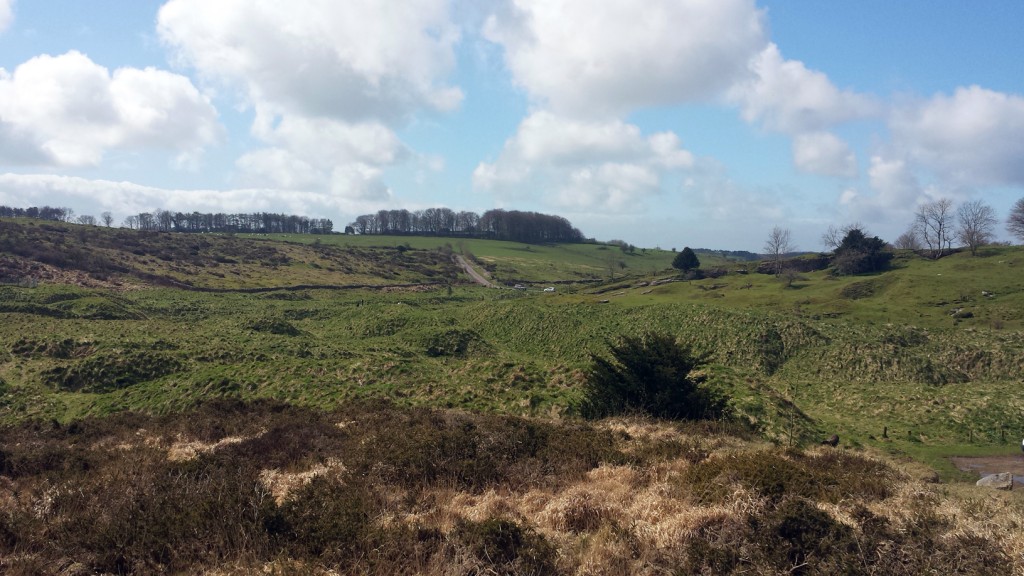
The interview and experiments I knew wouldn’t be a problem location-wise as David has a big garden and neighbours accustomed to open fires and odd experiments. The only thing that worried me slightly was that it would be completely dependent on the weather as David’s forge/workshop is somewhat bijou in terms of space. In the end there was nothing to worry about as we managed to film both the Charterhouse and the Reading footage in glorious sunshine.
The video
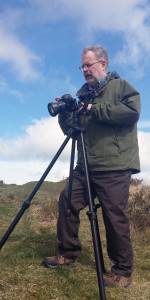
As part of the support system for those of us making videos for the first time, we had a teaching assistant assigned to the course to answer questions/provide advice. I can’t give any feedback on this aspect of the assignment as I used the digital expertise of my long-suffering friend Martin instead. As primarily a stills photographer, video was a new experience for him too, but as usual with anything techy it didn’t pose much of a challenge to him. The UCL wiki on the assignment was really helpful though, written by the obviously knowledgeable teaching assistant (David Larreina Garcia).
The video was shot on a Canon 5D Mk III using a variety of tripods. The panning shots were all done using a tripod with a Novoflex ClassicBall 5 Platform, a steady hand, and some precarious footwork – smoothly rotating a camera on a tripod through 270 degrees is not easy when you are perched on the edge of a 2 metre high rake bank. Video panoramas require specialist damping heads rather than the still photography equipment we had but the video came out brilliantly regardless. We shot in 1920×1080 25fps using a H.264 codec All-I, which means it was high quality video suitable for editing frame by frame in post production. All the video processing was done in Adobe Premiere, by Martin – I learnt a lot by watching, but as with Photoshop, it’s not the kind of program I can pick up straightaway and with the submission deadline approaching, I didn’t have the 5 or 6 months it took me to get competent in Photoshop.
The sound
Argh, the sound. This was the only part of the video that gave us grief. It was obvious from the on location shooting that the sound pickup from the camera itself was not going to be good enough for what we wanted, so we decided to use my Zoom H1 instead. This little digital recorder is great – but unfortunately for us, picked up far too much in terms of wind noise, despite the foam head we used to combat this. Martin ran the sound through Adobe Audition and managed to rescue most of it, and while the sound is a little off and hollow in places I think he did a top job getting the level more or less the same throughout the film considering what it sounded like straight off the recorder. I’m sure I could have borrowed a microphone from UCL, but it didn’t occur to me at the time – a valuable lesson learned.
The experiments
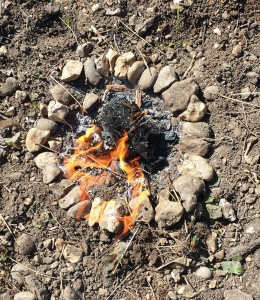
As expected the lead casting went off without a hitch. It’s always a joy to work with David and indulge my inner arsonist, and the only points we had to bear in mind were making sure that we weren’t moving in front of the camera while tending the ladle or pouring. Having to plan out each step of the experiment to make sure it would make sense to the viewers really focussed the mind on what was important; I knew that I wanted a good shot of the molten lead in the ladle as it’s not something people see very often, and it’s beautiful to boot.
Post-production and editing
Having shot all the footage and put together a rough running order, I was surprised to find it was approaching quarter of an hour long… for a video that’s supposed to be 6 minutes (not including the credits). That was a real eye-opener as trying to decide what to cut was very difficult, either because I felt they were an important part of the story, or because the footage was fun in its own right. For example, while doing the part that follows the introductory landscape panning, where I’m holding a square of lead, I originally had another clip following where I unrolled the roofing lead I was using – seeing a Swiss Roll in metal really brings home how malleable lead is. But, sadly, it had to go.
The major casualty of the video shoot was the section on lead shot, which was really disappointing as I considered it ‘my’ bit; while I did the casting for the plumbata, I was using a shaft and iron head made by David, while for the shot, it was all me. Ego aside, it wasn’t really adding anything to the story, so out it went. We also cut down the interview from 6 questions to 4, purely due to the time constraints. There were a lot of clips that made for a smoother video, but when push came to shove, had to be thrown out; for example, when the film cuts to David for the interview, there was a clip leading up to that of the two of us walking down his garden path, chatting, while the voiceover explained who he was. While it made for a more natural transition, there was just no time left to squeeze it in.
All of the video footage, but especially the landscape shots, were edited to make adjustments to factors like the colour levels; on the original film the rakes were less obviously defined as the grass and moss had become a little amorphous, but playing with the contrast and levels brought them back into defnition.
Timing
From the couple of hours we spent at Charterhouse, we only used about 30 seconds of footage; we spent approximately 5 hours in Reading and used 5 minutes of film.
With regards to the post processing, neither I nor Martin had ever used Adobe Premiere or Adobe Audition before. Putting a credit at the end of the video to thank Martin for his work is woefully inadequate. I tried to pick up a few things as to how key frames work, how to layer on the stills over the footage, but my input was dwarfed by his. Including learning how to use the software, post-production took between 60 – 80 hours. I now have a much greater appreciation for video graphics artists, as my video was pretty low tech in terms of graphics/title sequences, and took long enough – even allowing for the fact that we didn’t really know what we were doing to begin with.
My thoughts
I enjoyed being given the opportunity to try something new for this assignment, and have certainly picked up new skills and perspectives. Aside from the usual dislike of seeing/hearing oneself on film I think the video has turned out very well and looks so much more professional than I ever thought it would. David is an old hand at being filmed for interviews, and helped me get over my nerves at being on camera and the fades and transitions applied by Martin look great.
I think the video tells an engaging story, although I wish I’d had another minute or so to wrap everything up at the end, and to include more of the interview footage. I can be far more ruthless while writing an essay than I was with the video, but I put that down to the fact that the video feels like far more work than writing, both in terms of actual time spent capturing footage and then the hours to edit and process it.
For a subject like archaeometallurgy I think making a video works well, as there are plenty of visually interesting stories to be told. How it would work with other modules is something to think about, although whether it gets rolled out to other courses will depend on how our work is received. All that’s left now is to cross fingers and await marking!
PS Best played fullscreen.